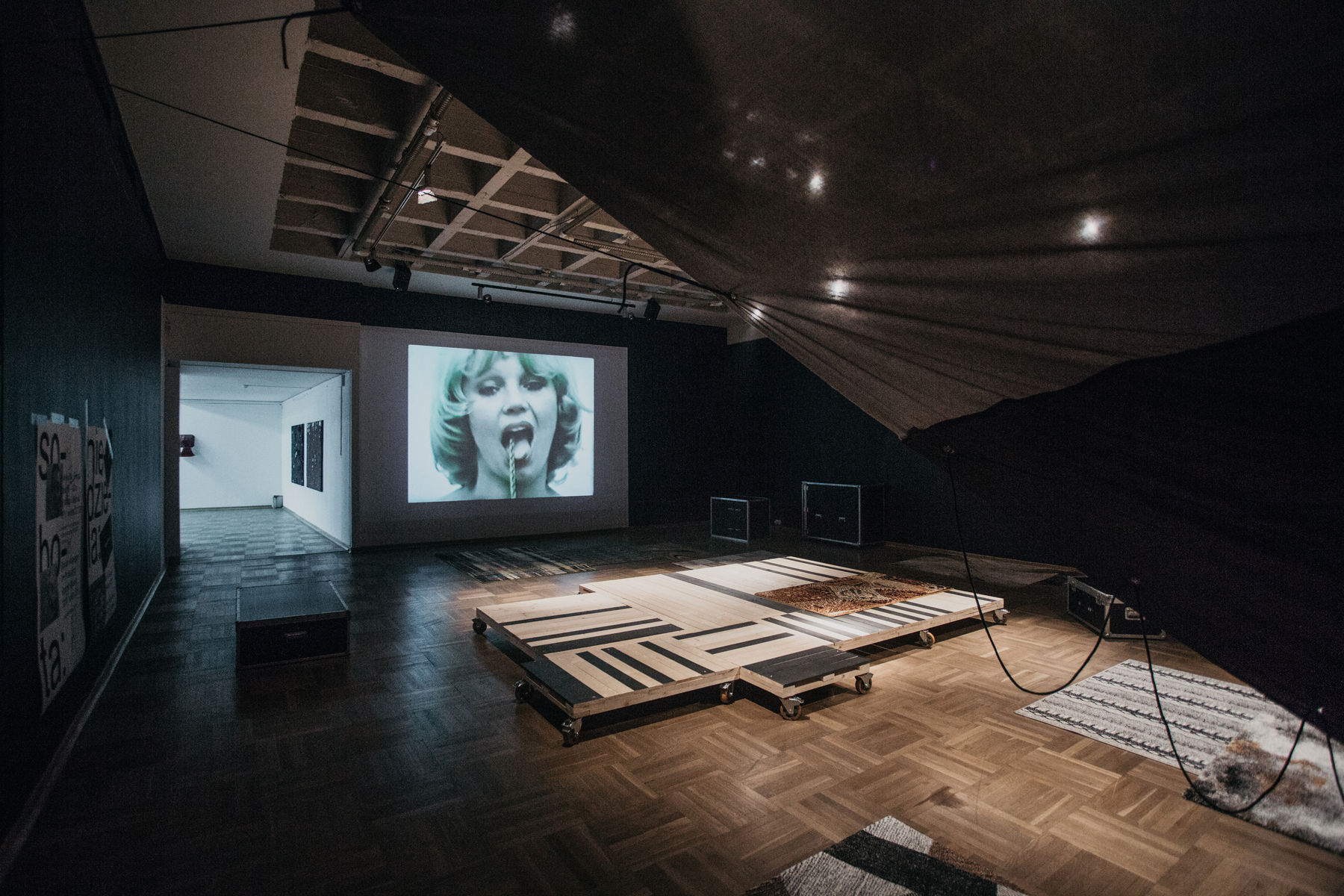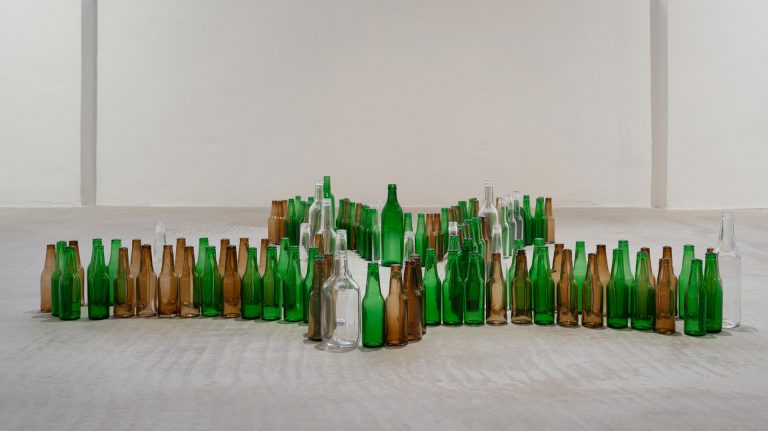Artists: Darja Bajagić, Wojciech Bąkowski, Matei Bejenaru, Piotr Bosacki, Pavel Brăila, Veronika Bromová, Jan Brož, Jiří Černický, Anetta Mona Chişa & Lucia Tkáčová, Matyáš Chochola, Romana Drdová, Habima Fuchs, Anežka Hošková, Jasanský & Polák, Atis Jākobsons, Zsófia Keresztes, Aurora Király, Adrian Kiss, Adam Kokesch, Jiří Kovanda, Václav Litvan, Piotr Łakomy, Pavla Malinová, David Maljković, Jimena Mendoza, Gizela Mickiewicz, Marge Monko, Vlad Nancă, Ioana Nemeş, Alice Nikitinová, Richard Nikl, Pakui Hardware, Julius Reichel, Dragana Sapanjoš, Jiří Skála, Adéla Součková, Petr Štembera, Аvdej Ter-Oganyan, Mark Ther, Viktor Timofeev, Jerzy Truszkowski, Emöke Vargová, Martin Vongrej, Jana Želibská
Exhibition title: ORIENT, The New East in Central Eastern European Art
Curated by: Michal Novotný
Co-curated by: Anna Bargiel
Venue: Bunkier Sztuki Gallery of Contemporary Art, Kraków, Poland
Date: September 22 – December 9, 2018
Photography: all images copyright and courtesy of the artists and Bunkier Sztuki Gallery of Contemporary Art
Note: Curatorial text by Michal Novotný can be found here
The Orient exhibition is a contemplation of the Central and Eastern European identity as well as of diverse artistic practices and approaches of the region’s artists. It is a reflection on experiences, beliefs and patterns that we, as inhabitants of this inhomogeneous region, share.
On the one hand, our similar historical, socio-political and cultural background has strengthened the feeling of geographical belongingness, making it fundamental to our actions. But on the other hand, it has also, at times, served as a source of major embarrassment. Paradoxically though, contradictions are what unites us. We are torn between affirmation and negation; we feel proud and unique, but at the same time, we yearn to catch up with the West. This conflict, fuelled by the persisting stereotypes and the popular view of Central Eastern Europe that has been around since the Cold War era, still affects the region’s artistic output.
In Europe, the Cold War has separated the East from the West. Although the geopolitical divisions of that period have gradually lost their significance, the stereotypical thinking lingers on. Central and Eastern Europe is still viewed through the prism of these stereotypes, and the resulting traumas and complexes are being passed on from generation to generation.
The “Orient” in the title refers not only to the occident of Europe but also to the views of Edward Said, who claimed that a region which becomes the subject of reflection is a mere projection, an arrangement which has never existed in the shape we imagine. In an ironic way, the exhibition deflates the heavy-handed, oversimplified and homogenous depiction of Central and Eastern Europe. It encourages the audience to abandon obvious distinctions and simplistic thinking and to reassess the Central Eastern European experience. It presents the works of contemporary artists who have ties to the region that up until recently was largely marginalized in the Western-centred history of art.
This exhibition is a performance, which scenography is comprised of the works that touch upon the themes permeating our mentality and culture. It presents scenes from a subjective history of Central and Eastern Europe from the late 1980s onwards. The exhibition rooms – Waiting Room, All Dressed Up and Nowhere to Go, Carpathian Digital Meadows, The Devil in the Machine, Shadows of the Past Futures – lead us across the common experiences, which have shaped the social and cultural identity of our generations. The Orient touches upon motifs, which have always concerned the region’s inhabitants but which are only now becoming more appealing – and for a Western audience as well.
These motifs have come a long way, journeying from the experience of communism and through the beginnings of capitalism and the fascination with Western culture. Through contestation, they have finally reached the point where the 1990s, hailed as “poor but sexy,” are making a comeback, and the iconosphere of the “missing decade,” built around the political transformation, is becoming a source of inspiration and a sign of our times.
The exhibition curated by Michal Novotný has been designed as an itinerant one. It was presented at two European cultural institutions: Kim? Contemporary Art Centre in Riga (Latvia) and the BOZAR Centre for Fine Arts in Brussels (Belgium). The final exhibition show at the Bunkier Sztuki Gallery has been co-curated by Anna Bargiel.
The exhibition is part of the Trauma & Revival. The Post-War Era in the Art of Eastern and Western Europe international project supported by the European Commission’s Creative Europe framework programme.
The Orient is co-financed by the Polish Ministry of Culture and National Heritage from Fund for the Promotion of Culture.
Project partners: Austrian Cultural Forum Moscow (Moscow, Russia), ZKM | Center for Art and Media Karlsruhe (Karlsruhe, Germany), Kim? Contemporary Art Centre (Riga, Latvia), Cittadellarte – Fondazione Pistoletto (Biella, Italy), Gallery ROSIZO (Moscow, Russia), Bunkier Sztuki Gallery of Contemporary Art (Krakow, Poland), Tretyakov Gallery (Moscow, Russia), Pushkin State Museum of Fine Arts in Moscow (Moscow, Russia), BOZAR Centre for Fine Arts (Brussels, Belgium), University of Jyväskylä (Jyväskylä, Finland)
Co-organizers: Kim? Contemporary Art Centre, the BOZAR Centre for Fine Arts.
Media partners: Blok, Czas Kultury, Herito, NN6T, Szum, Gazeta Wyborcza Kraków, Co Jest Grane 24
Support: Kingdom of Belgium, Belgian Ministry of Foreign Affairs, The Flemish government, the government of the French Community of Belgium and the government of Wallonia, Latvia 100, the Ministry of Culture of the Republic of Latvia, Latvian State Culture Capital Foundation (SCCF), the City Council of Riga, CA Visual Com, Conrad Festival, the Romanian Cultural Institute.
Media partners of the gallery: Le Monde Diplomatique, Lounge, Radio Kraków.




















































